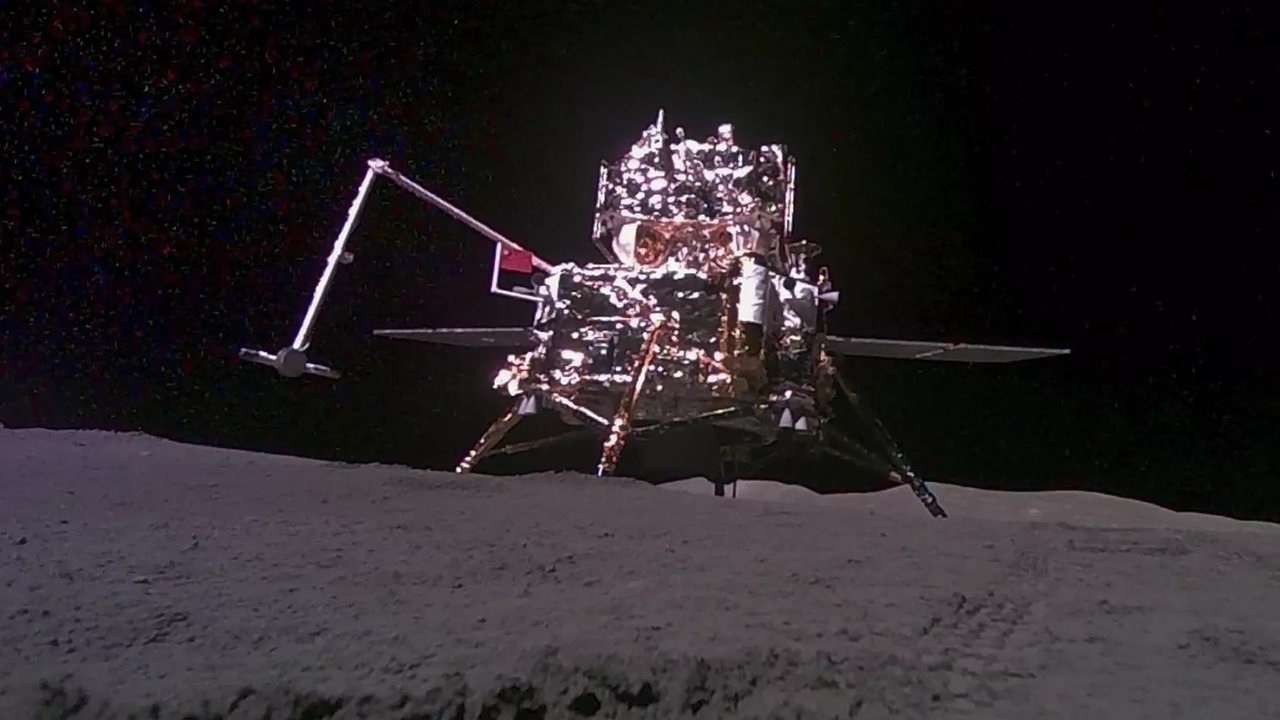China’s Chang’e 6 probe returned to Earth Tuesday with rock-and-soil samples from the Moon‘s far side. The mission has sparked a flood of misinformation targeting Nasa’s Apollo missions, reigniting old conspiracy theories about the US space program.
Why it matters
This misinformation campaign risks inflaming anti-US sentiment in China amid rising space competition.
Researchers argue it undermines space diplomacy between the two superpowers, exacerbating tensions in an already fraught geopolitical climate.
The big picture
The Chang’e 6 mission is a milestone for China’s space program, marking the first successful return of samples from the Moon’s far side. However, it has also been used to propagate falsehoods about NASA’s achievements.
US-China space rivalry: Both nations are intensifying their efforts in space exploration. China aims to send a crewed mission to the Moon by 2030 and build a lunar base, while the US plans to return astronauts to the Moon by 2026 with the Artemis 3 mission.
What they are saying
Saadia M Pekkanen, University of Washington: “There is undeniably a great power rivalry in space between the US and China, and any kind of misinformation about the activities by either country is concerning.”
Isaac Stone Fish, Strategy Risks: “Allowing conspiracy theories on the US moon landing to fester may reflect insecurity on Beijing’s part on the space race.”
Zoom in
Comparative imagery: Chinese social media users compared images of China’s stone flag on the Moon with photos from NASA’s Apollo 16 mission. Posts falsely claimed the US flag appeared to “blow” in the wind, suggesting the Apollo landings were staged. This despite NASA’s explanation that a horizontal bar was used to hold the flag upright.
Recycled conspiracy theories: Old photos from NASA’s Apollo missions are being misrepresented as images from China’s recent lunar missions. This tactic of recycling existing conspiracy theories seeks to sow online distrust and shift perceptions.
Between the lines
Social media influence: Posts on platforms like Weibo and Douyin have spread these falsehoods widely, attracting significant engagement. One user with over 13 million followers claimed the photos proved that “Americans did not land on the Moon,” reflecting how misinformation can gain traction.
State involvement: While it is unclear if Chinese state-backed actors are directly involved, the rapid spread of misinformation on tightly controlled networks raises questions about possible support or tacit approval.
What next
The spread of misinformation highlights the need for robust space diplomacy and accurate information dissemination. Both nations continue to push forward with ambitious space plans, making clear communication and fact-checking more crucial than ever.
Researchers suggest that international cooperation and transparency in space exploration could help mitigate the negative impacts of such misinformation campaigns.
(With inputs from agencies)
Why it matters
This misinformation campaign risks inflaming anti-US sentiment in China amid rising space competition.
Researchers argue it undermines space diplomacy between the two superpowers, exacerbating tensions in an already fraught geopolitical climate.
The big picture
The Chang’e 6 mission is a milestone for China’s space program, marking the first successful return of samples from the Moon’s far side. However, it has also been used to propagate falsehoods about NASA’s achievements.
US-China space rivalry: Both nations are intensifying their efforts in space exploration. China aims to send a crewed mission to the Moon by 2030 and build a lunar base, while the US plans to return astronauts to the Moon by 2026 with the Artemis 3 mission.
What they are saying
Saadia M Pekkanen, University of Washington: “There is undeniably a great power rivalry in space between the US and China, and any kind of misinformation about the activities by either country is concerning.”
Isaac Stone Fish, Strategy Risks: “Allowing conspiracy theories on the US moon landing to fester may reflect insecurity on Beijing’s part on the space race.”
Zoom in
Comparative imagery: Chinese social media users compared images of China’s stone flag on the Moon with photos from NASA’s Apollo 16 mission. Posts falsely claimed the US flag appeared to “blow” in the wind, suggesting the Apollo landings were staged. This despite NASA’s explanation that a horizontal bar was used to hold the flag upright.
Recycled conspiracy theories: Old photos from NASA’s Apollo missions are being misrepresented as images from China’s recent lunar missions. This tactic of recycling existing conspiracy theories seeks to sow online distrust and shift perceptions.
Between the lines
Social media influence: Posts on platforms like Weibo and Douyin have spread these falsehoods widely, attracting significant engagement. One user with over 13 million followers claimed the photos proved that “Americans did not land on the Moon,” reflecting how misinformation can gain traction.
State involvement: While it is unclear if Chinese state-backed actors are directly involved, the rapid spread of misinformation on tightly controlled networks raises questions about possible support or tacit approval.
What next
The spread of misinformation highlights the need for robust space diplomacy and accurate information dissemination. Both nations continue to push forward with ambitious space plans, making clear communication and fact-checking more crucial than ever.
Researchers suggest that international cooperation and transparency in space exploration could help mitigate the negative impacts of such misinformation campaigns.
(With inputs from agencies)






